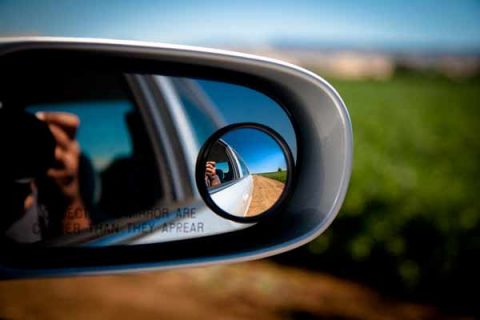The expression “hindsight is 20/20” might be a nice metaphor for the clarity of events after the fact, but it’s certainly not a literal truth – looking back, our vision is often more restricted than it is when we’re looking straight ahead. This is clear to anyone who’s ever tried to reverse a vehicle into a narrow parking spot, or down a tight driveway. Turning your neck at an awkward angle, edging your car, truck, or motorhome backwards while checking every conceivable mirror for obstacles, you don’t exactly get a clear view. Rather, you have to piece together snapshots taken from nearly half a dozen different angles – left shoulder, right shoulder, rear vision mirror, left wing mirror, right wing mirror. The result is confusing and makes it easy to miss a camouflaged parked car or some bushes that stick out into your blind spot. It’s even worse if you’re driving at night, when the twin threat of darkness and blinding headlights looms over you.
But there is an easier way. A reversing camera provides a consistent view of what’s happening behind your vehicle, showing up on a monitor that you can easily view from the driver’s seat. The camera works at night, and the monitor can be programmed to include a distance scale, which means an end to rough guesses about how far away that kerb is. Caravan rear vision systems also exist, allowing you to mount a camera on a trailer that otherwise would have been nearly impossible to handle while reversing. Overall, it’s a huge improvement over fragmented, piecemeal reversing that’s done with mirrors. The rear vision camera makes reversing comfortable, predictable, and takes away a lot of the difficulty and danger from reversing and parallel parking. With a camera, hindsight really is 20/20.


